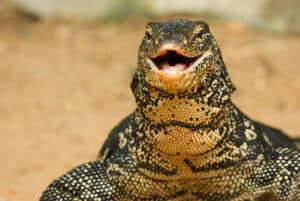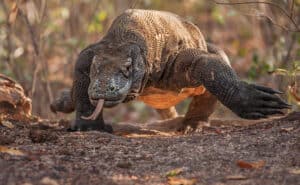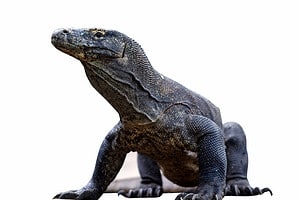Continue reading for our analysis...
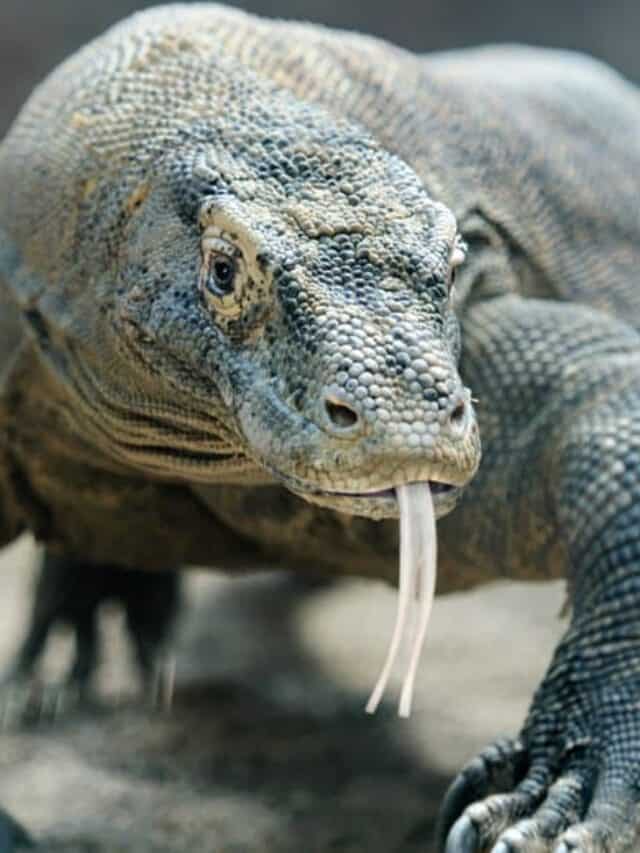
This montage of clips of the mighty Komodo dragon hunting various prey is addictive viewing. They were all filmed on Komodo Island which is part of the Lesser Sunda chain of Indonesian islands. Inside this stunning national park, there are volcanic hills, forests, and grasslands as well as miles and miles of beaches.
All of the clips are amazing but when you click below to watch the full video make sure that you keep watching until around halfway when you get a hilarious glimpse of a gigantic Komodo that looks like it has got a turtle shell stuck on its head! It’s actually not a fashion statement, it’s lunch!
Komodo Dragons in the Wild
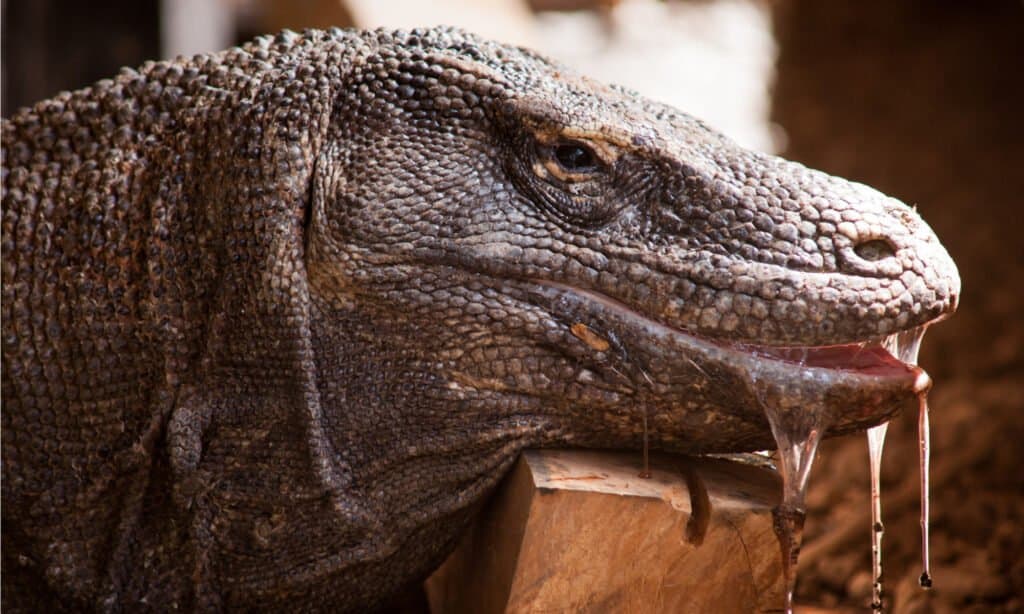
Komodo dragons carry deadly bacteria in their mouth!
©Luca Vaime/Shutterstock.com
Komodo dragons are found on just five Indonesian islands. They can live for up to 40 years and weigh up to 300 pounds. Some are over 10 feet in length! On these islands, they are apex predators and have perfected the technique of ambushing prey with speed and ferocity. These animals can take down prey that is much larger than them and are very aggressive.
Komodo dragons are excellent swimmers and can be seen swimming from one island to another. It also means that they can catch the occasional sea turtle.
Komodo Dragon Prey

The Komodo dragon diet is mostly made up of wild pigs, water buffalo, and deer. However, they will also target smaller snakes, lizards, and birds. Their hunting technique involves ambushing with great ferocity and speed.
A first attack on a larger animal is not always successful at first but these reptiles bide their time. They have such a potent mix of pathogens in their mouth that the poor animal often dies of sepsis in a day or so. Komodo dragons are more than happy to eat carrion – even if it has been killed by another animal. By flicking out their tongue, they can detect the chemicals given off by live and dead prey up to four miles away.
Eating is not a delicate process, these guys rip bits off the carcass, toss it into their mouths, and swallow it whole by flexing their neck muscles. No chewing is required!
Is It Normal Behavior For a Komodo Dragon to Eat a Turtle?
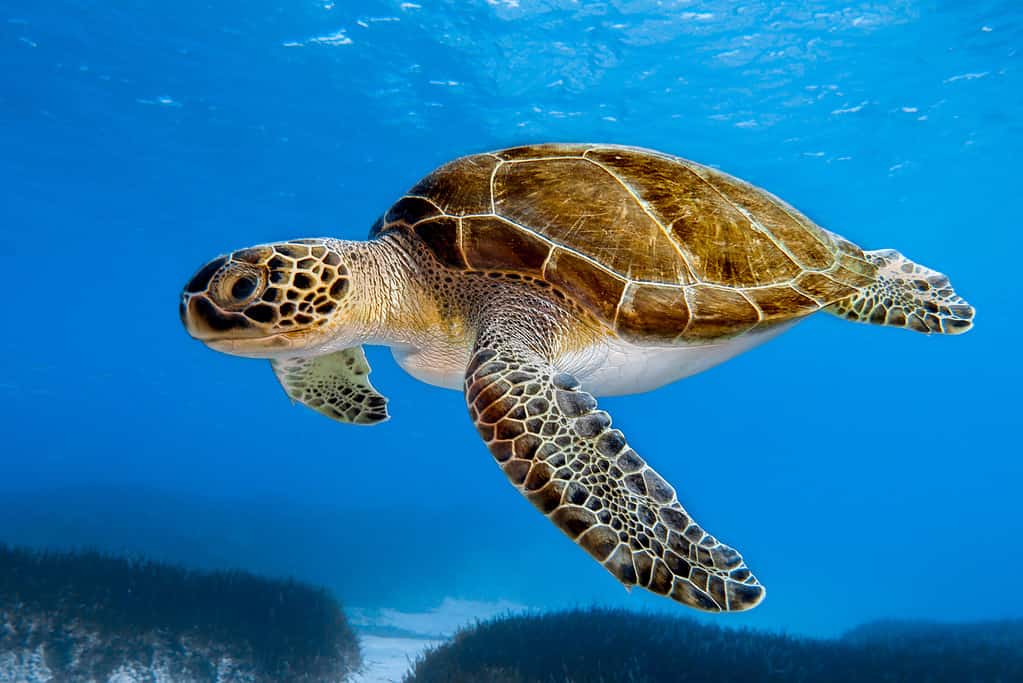
Just because a Komodo dragon
caneat a sea turtle, that doesn’t make it an easy task.
©Sakis Lazarides/ via Getty Images
We’d gather it’s not normal for a Komodo Dragon to wear a turtle shell in such a way–it probably walked the shell onto the beach as a dramatic ending to a particularly large meal! But do Komodo dragons often prey on sea turtles? Komodo dragons do eat turtles, although they more often prey on rodents, monkeys, goats, wild boars, and even deer.
Given that the Komodo dragon has special tools in its jaws like an intramandibular hinge which can make its jaw open very wide, as well as movable joints, it has the ability to swallow a turtle whole, as in the video here. Its powerful jaws can even crush a turtle’s shell. The dragon can regurgitate parts of the animal that its stomach would struggle to digest, including horns, teeth, hair, feathers, and turtle shells.
Given that the turtle in the featured video is so large, it’s safe to assume the Komodo dragon somehow penetrated the turtle’s shell and probably ate it from the inside out–thus wearing its shell as a helmet. This dragon has proven that it’s possible, however, it’s not an everyday occurrence.
Thank you for reading! Have some feedback for us? Contact the AZ Animals editorial team.



